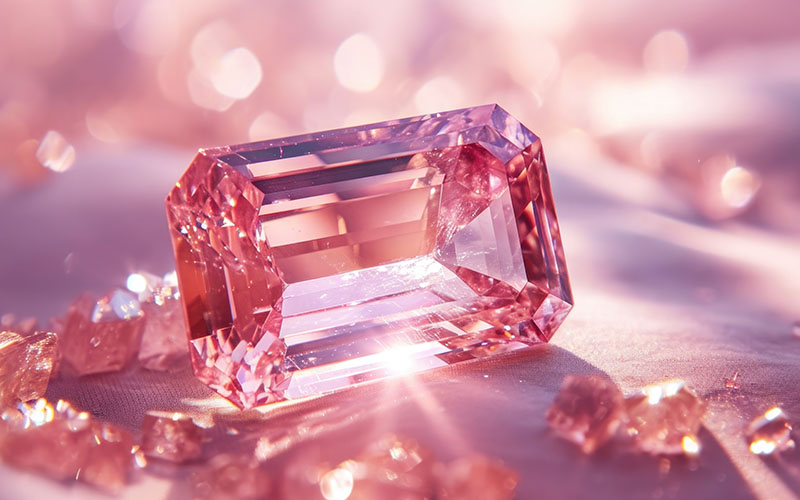1. Determine Your Budget
IGI is on schedule to achieve carbon neutrality in 2022 through a partnership with SCS. Since 1984 SCS has been advancing sustainable development goals across multiple sectors through auditing, testing, certification and developing leadership standards to create a framework for continuous improvement. As the first gemological institute to make this commitment, IGI joins the Responsible Jewelry Council (RJC), International Precious Metals Institute (IPMI) and Initiative for Responsible Mining Assurance (IRMA) in association with SCS Global Services.

2. Determine Your Timeline
It’s helpful to know when you plan to propose. Ideally, you’ll have time to perform research on as many products in as many channels as you need to have confidence in the purchase. There are a wide variety of products, sellers, markets, and models so it’s prudent not to purchase impulsively. On the other side of the spectrum the cost of diamonds and jewelry changes over time so if you’re months or years away, consider current prices as a guideline you’ll need to revisit before pulling the trigger.

3. Understand Style and Substance
An engagement ring is likely one of the most significant purchases you’ll ever make. Likewise, the symbol of your union will be one of the most treasured belongings the recipient will ever wear. For this reason, it’s critical to know what diamond shape and engagement ring style the recipient prefers. It’s also a good idea to know whether the wearer prefers natural, or lab grown diamonds, or will be delighted with either. Candidly, if you’re unsure about her preferences, you could propose with a simple solitaire setting. It’s a timeless, affordable classic which can be upgraded or changed later.

4. Understand the Principles of Reliable Research
Most providers of diamonds and engagement rings have information in-store and posted online about their products. With that said, the research landscape is not even. Every seller’s website is promotional, and some sellers lean into the advantages of their products and policies more than others do. The most reliable research should start with education on diamonds and engagement ring basics from reliable, authoritative sources like IGI that provide such information but are not engaged in sales. A foundation of neutral understanding will best prepare you to do further research with various providers.
5. Reliable Diamond Basics
You may have heard of the fundamental diamond 4Cs: Carat, Color, Clarity and Cut. Diamonds are assessed in each of these four categories and every diamond’s value is impacted by those assessments, which are listed below from most to least influential.The most influential value factor is diamond carat weight. This is because large rough diamond crystals are required to produce large diamonds. But larger rough is far more rare than smaller rough. So, the heavier the diamond, the more-rare and valuable it is.The next most influential factor is diamond color. In the normal color range, diamonds which are completely colorless are more-rare than diamonds that have some tint, therefore more valuable.In the same manner, diamonds which are free of diamond clarity characteristics (which some people call ‘imperfections’) are more-rare than diamonds with such characteristics, so the cleaner the diamond, the more valuable it is.And finally, diamond cut quality assesses its human craftsmanship, analyzing what man did to shape the rough crystal and promote positive beauty components. The better the cut quality, the more valuable the diamond.

6. Reliable Engagement Ring Basics
The solitaire engagement ring style has been the most popular engagement ring style for generations. A timeless classic, it places the gemstone at center stage with elegance and simplicity.This halo style engagement ring adds a “halo” of small accent stones surrounding the center stone. The main advantage of this style is more sparkle directly around the center stone, making it appear larger.The pavé style, pronounced “pah-vay,” adorns the ring with rows of smaller diamonds set flush with the surface of the ring.The three stone engagement ring style showcases a large center gemstone flanked by two smaller stones. Diamond center stones can be accented with smaller diamonds or colored gemstones for contrast.The five stone engagement ring style uses five stones set above the shank. The stones may be equal size or graduated to feature the center stone. As with three stone settings, the five stone style can be used to mix or match color with diamonds.

7. Diamond 4Cs
The fundamental diamond 4Cs are Carat, Color, Clarity and Cut. Diamonds are assessed in each of these four categories and every diamond’s value is impacted by those assessments.
Pro tip: Read our Diamond 4 Cs information for quick reference.




